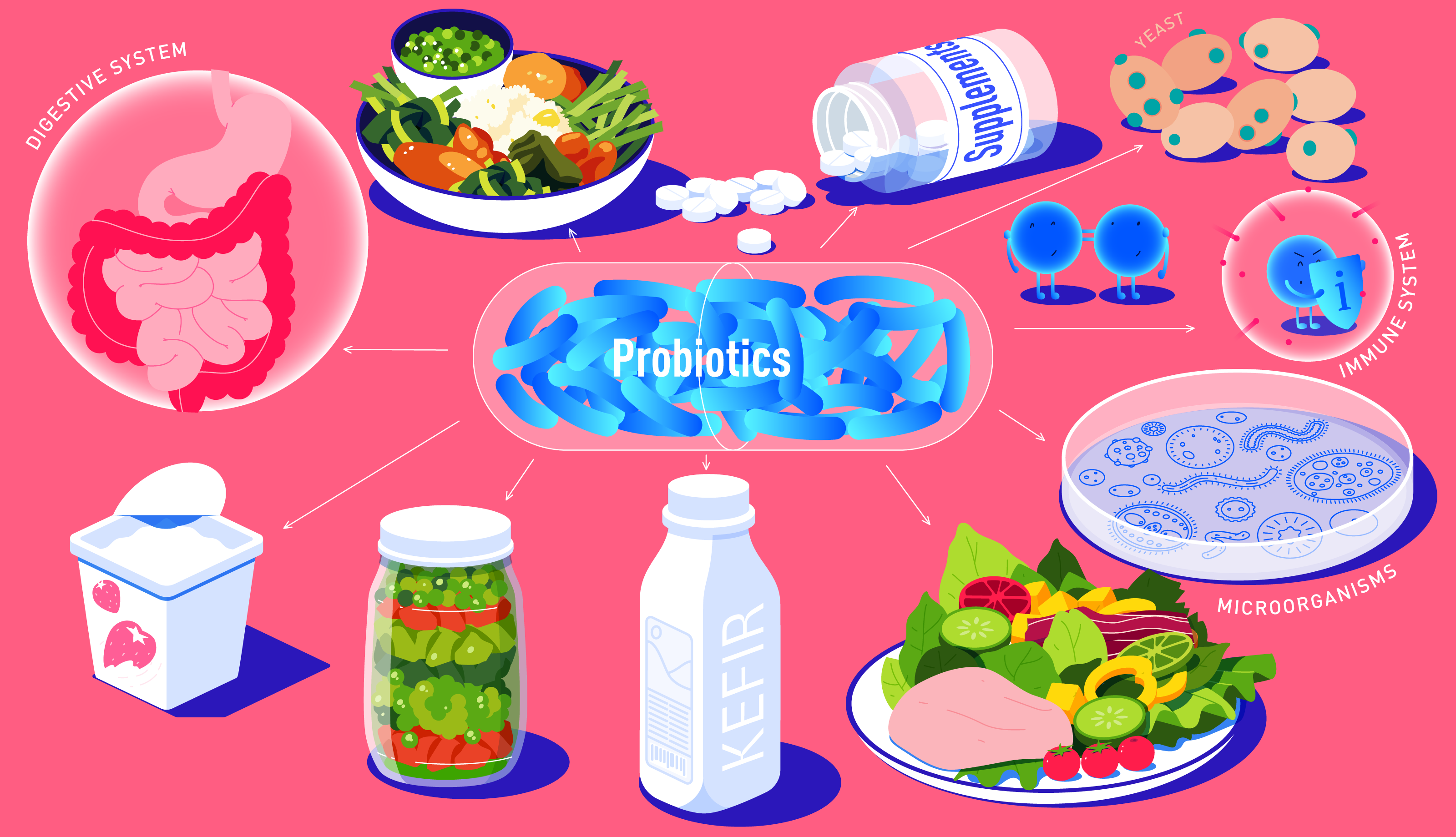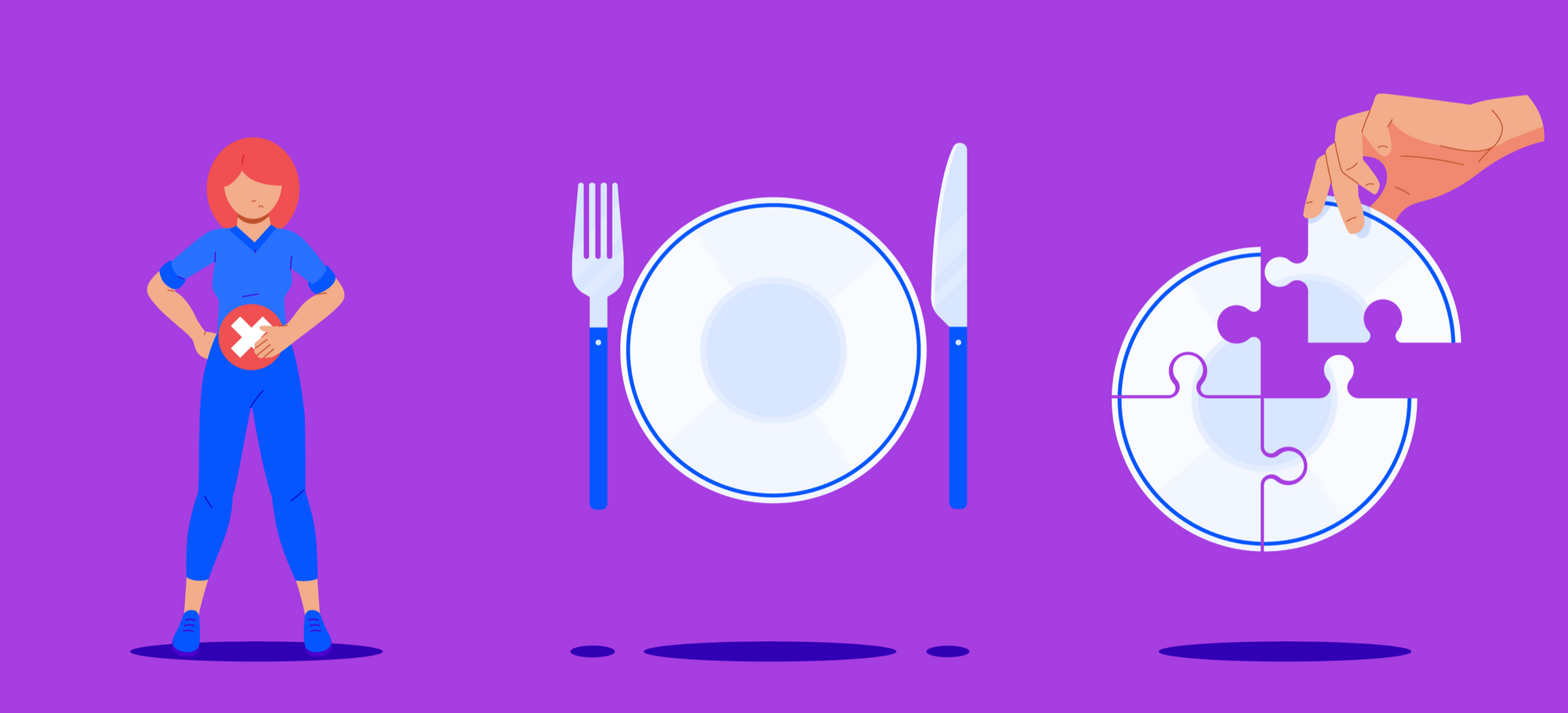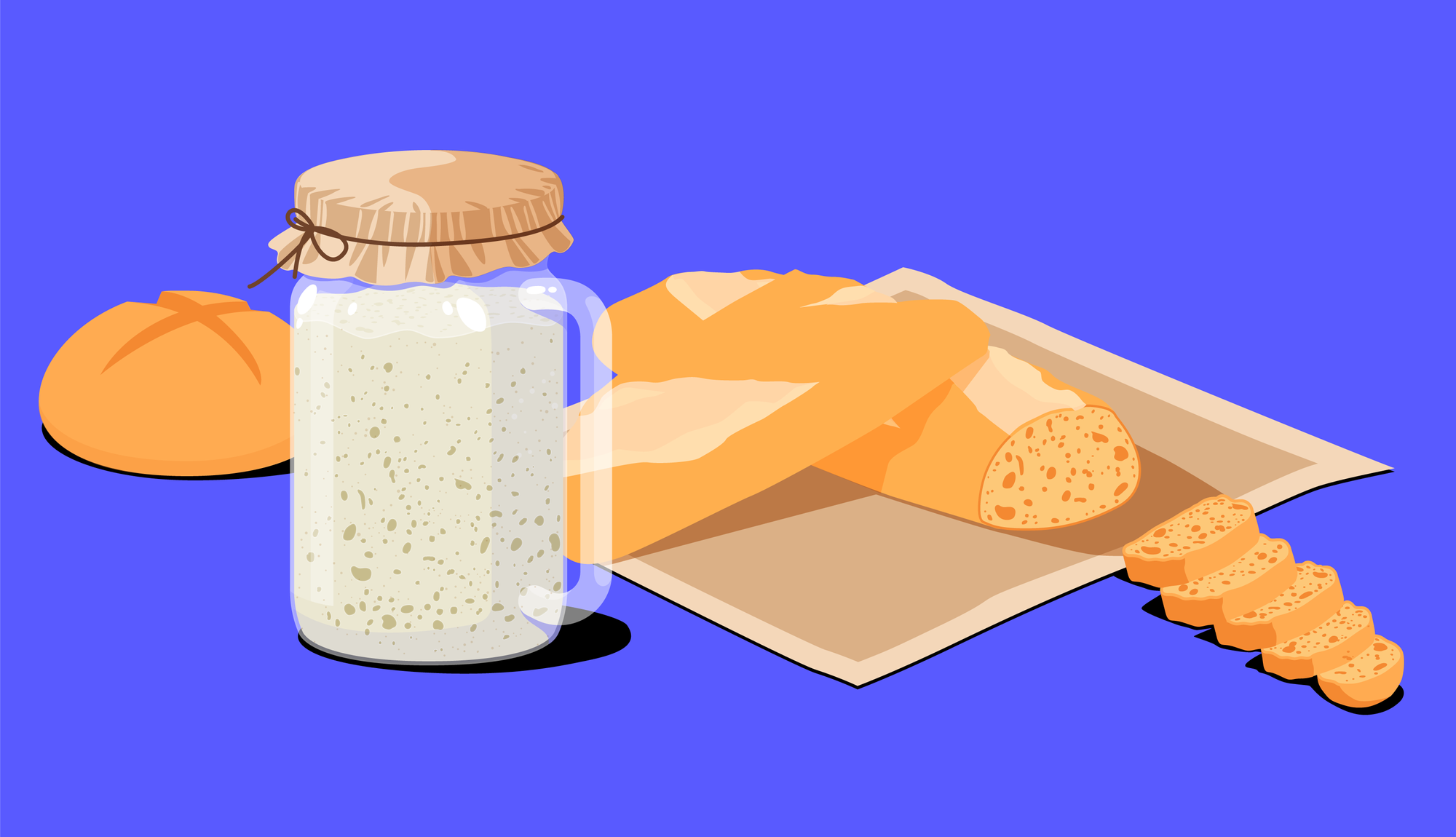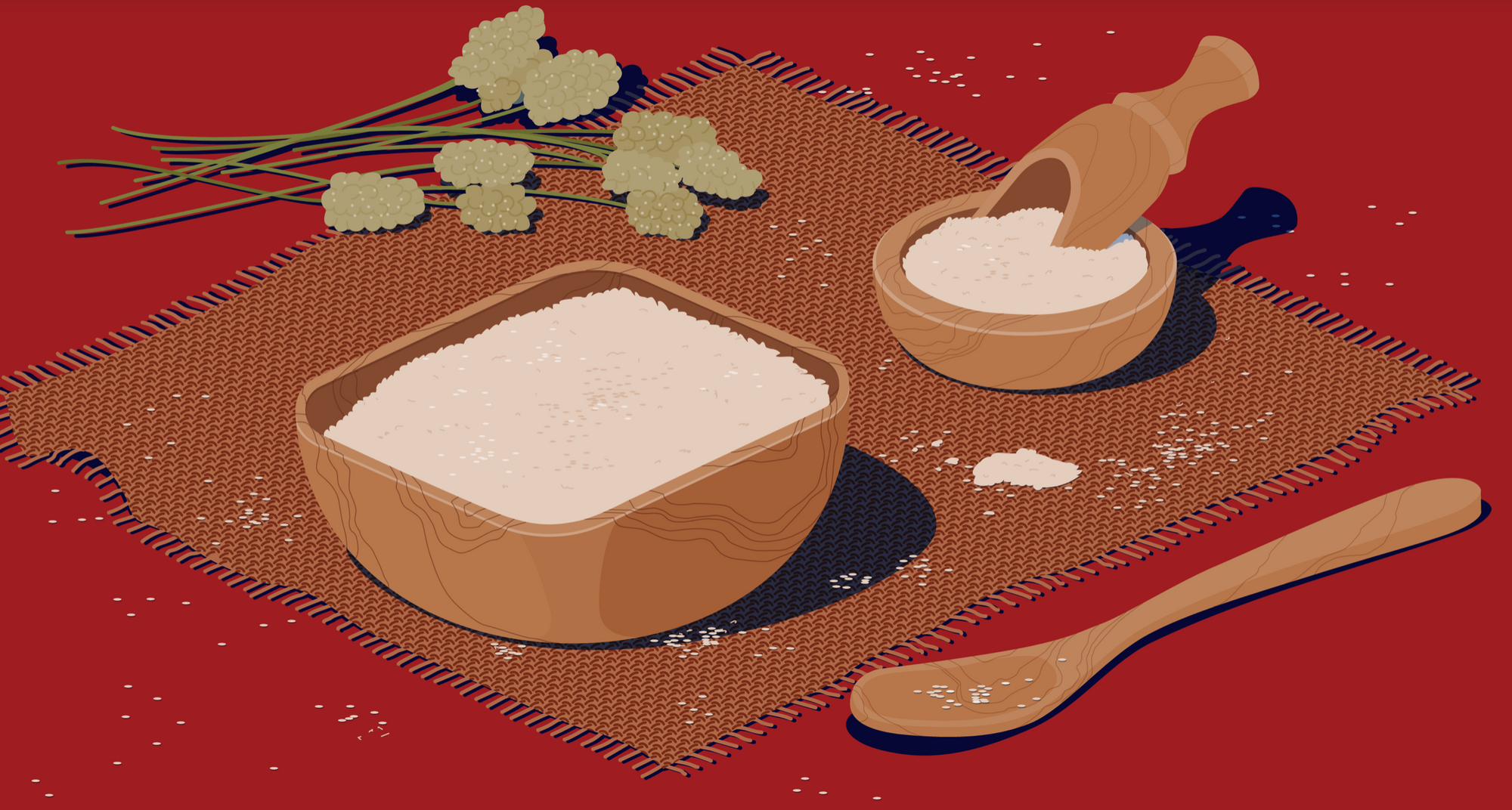A low-FODMAP diet can significantly improve IBS symptoms, but it may also put you at an increased risk for fibre deficiency, depleting microbiome diversity in the process. In honour of IBS awareness week, we are looking at high-fibre, low-FODMAP foods and supplements.
Table of contents
- What is IBS?
- What are FODMAPS?
- What is the low-FODMAP diet?
- FODMAPS, prebiotics and the microbiome
- Low-FODMAP substitutes
- A nutritionists top tips
- Sourdough, IBS and digestibility
- Important principles
- Dietary fibre supplements
- Summary
What is IBS?
Irritable Bowel Syndrome (IBS) is a common digestive condition characterised by chronic, relapsing symptoms such as stomach cramps, bloating, diarrhoea, constipation and distension.
IBS is a functional condition, meaning that despite disruptions to bowel function, there are no observable physical changes in the gut.
April marks IBS Awareness month, a campaign to raise awareness about the condition and educate the public regarding the diagnosis, treatment and management of IBS.
In honour of this, we are looking at the low-FODMAP diet, one of the primary dietary interventions for the condition. More specifically, we will look at some low-FODMAP, high fibre substitutes to help nourish your beneficial bacteria and encourage microbiome diversity. Without further ado, let’s jump in:
What are FODMAPS?
FODMAPS are a group of short-chain carbohydrates that aren’t absorbed properly in the gut.
As a result, they can trigger symptoms in people with IBS. FODMAPs are found naturally in many foods, mainly plant-based, fibrous items. The acronym stands for Fermentable Oligosaccharides, Disaccharides, Monosaccharides and Polyols, which have been broken down in the table below:
| Carbohydrate group | Carbohydrate type and dietary sources |
|---|---|
| Fermentable | Process through which gut bacteria ferment undigested carbohydrate to produce gases | Oligosaccharides | Fructans & Galacto-oligosaccharides - found in foods such as wheat, rye, onions, garlic and legumes/pulses |
| Disaccharides | Lactose - found in dairy products like milk, soft cheeses and yogurts |
| Monosaccharides | Fructose - found in specific fruit, honey, apples, high fructose corn syrups, some flavored waters |
| Polyols | Sorbitol and Mannitol - Found in specific fruit and vegetables, artificial sweeteners, chewing gum and mints |
Unlike other carbohydrates such as glucose, FODMAPS are partly indigestible. As a result, they pass undigested into the large intestine, where our gut microbiota begins fermenting the remains.
As bacteria produce gas, the intestinal tract expands and activates nerves, triggering pain signals to the brain. Furthermore, FODMAPS can also draw water into the large intestine, increasing pressure along the intestinal wall and leading to diarrhoea.
So why do those with IBS suffer whilst others can tolerate the gas production? Research has shown that those with IBS have particularly sensitive guts, known as visceral hypersensitivity. Because of this, they are more susceptible to pain and discomfort.
Additionally, IBS patients often exhibit slower gut motility, meaning food moves through their digestive tract less quickly. As a result, FODMAPS have more time to draw water through the small intestine and increase pressure in the gut wall.

FODMAPS and the microbiome
Both fructans and galacto-oligosaccharides (GOS) are prebiotic fibres, making up the O in FODMAP.
Prebiotics are non-digestible fibres that cannot be broken down or absorbed in the small intestine; instead, they pass undigested into the colon. Once there, they act as compost for probiotic bacteria, which feed on undigested carbohydrates.
Butyrate is crucial for to our health in the bowel and beyond. For example, this impressive metabolite strengthens the gut lining and prevents pathogens escaping into the bloodstream via the gut. On top of this, butyrate soothes immune cells and prevents chronic inflammation.
Long-term, restricting FODMAPS can disrupt microbiome diversity and lead to an imbalance in the microbiome, known as dysbiosis.
☝TRAVEL GUT☝ Do you notice that your IBS gets worse after flying? If so, it might be due to increased pressure in your gut. When you are on a plane, changes in atmospheric pressure cause gas to expand.
What is the Low-FODMAP Diet?
The low-FODMAP diet is an elimination diet to help identify specific FODMAP foods that trigger IBS symptoms. It is NOT a diet for life and should only be followed under medical supervision. Typically, it lasts from around 2 to 6 weeks, depending on how quickly symptoms resolve themselves.
The diet, developed by Monash University, categorises food as “low” and “high” FODMAP per portion based on the average of multiple samples.
You can discover the FODMAP content of food by downloading the Monash health app, which categorises food according to a traffic light system. The diet consists of three stages, namely:
- Restriction
- Reintroduction
- Personalisation
The restriction phase is what people commonly refer to as the low-FODMAP diet. During this period, a nutritionist will help you to slowly phase out high FODMAP foods, such as wheat, rye, onion, garlic, kidney beans and specific fruits or vegetables.
Remember that high-FODMAP foods can be low FODMAP if eaten in small portions. If you do not see improvement during this phase, you should revert to your usual diet and consider other therapies.
Next up is the reintroduction phase, which can last several months. You should gradually reintroduce FODMAPS one by one during this stage, in portions decided by a nutritionist.
The reintroduction phase can help you identify offending foods and discover which portion sizes your body is able to tolerate. After the reintroduction phase, many people are able to return to their usual eating habits, avoiding just a few FODMAP foods in large amounts.
☝IMPORTANT☝ If you have a history of eating disorders or restrictive eating, a low-FODMAP diet can trigger negative thinking patterns. A low-FODMAP diet should only be trialled under the supervision of a qualified nutritionist.
Low-FODMAP substitutes
Recent research has shown that a strict low-FODMAP diet can deplete beneficial bacteria and disrupt microbiome diversity over time. For this reason, Monash recommends against following a rigid low-FODMAP diet long-term.
Furthermore, it is important that you test your tolerance with different portion levels; even if you are highly sensitive to a FODMAP, you may be able to manage small portions.
During the restriction phase, it is inevitable that your prebiotic intake will be reduced, though you needn't stop eating gut-loving plant fibre entirely.
Moreover, there are plenty of low-FODMAP, high fibre foods you can consume whilst trailing the low-FODMAP diet, as laid out in the table below:
| Food group | High-FODMAP foods | Low-FODMAP substitutes |
| Vegetables | Artichoke, asparagus, cauliflower, garlic, broccoli, brussels sprouts, green peas, mushrooms, onion, sugar snap peas, cabbage, leeks, chicory root, dandelion root, sweetcorn | Aubergine, green beans, courgettes, kale, pickled garlic and onion, tomatoes, spinach, peppers, celery, ginger, pumpkin, parsnip, bok choy, green capsicum (bell pepper), carrot, cucumber, lettuce, potato, zucchini |
| Fruits | Apples, apple juice, cherries, blackberries, dried fruit, mango, nectarines, peaches, pears, plums, watermelon, prune, apricot, lychee, figs, watermelon | Cantaloupe, kiwi fruit, mandarin, orange, pineapple, blueberries, grapes, passion fruit, rhubarb, strawberries, boysenberry, cranberry, lemon, lime |
| Protein sources | Most legumes/pulses (baked beans, chickpeas, soya beans, kidney beans), pistachios, cashews | Eggs, tofu, plain cooked meats/poultry/seafood, tempeh, Macadamia nuts, peanuts, pumpkin seeds, walnuts, Brazil nuts |
| Grains | Wheat, rye and barley based bread, breakfast cereals/biscuits | Oats, polenta, quinoa, sourdough spelt bread, buckwheat, millet |
| Other | High fructose corn syrup, honey, agave, low-sugar chewing gum, cow's milk, custard, soy milk (made from whole soybeans) | Dark chocolate, maple syrup, rice malt syrup, table sugar, almond milk, brie/camembert cheese, feta cheese, hard cheeses, lactose-free milk |
Top Tips from our expert nutritionist
Our head nutritionist, Liza Hilman, has compiled some top tips for those reintroducing FODMAPS during the personalisation stage:
Tip 1: Tinned and rinsed legumes contain fewer FODMAPS than dry boiled beans yet still feed your gut bacteria. When introducing legumes back into the diet, ensure they are thoroughly washed and tinned.
Tip 2: As you reintroduce legumes back into your diet, initially aim to limit the portion size to 2-3 tbsps or ¼ cup per sitting. Your gut bacteria need time to adapt to the higher quantity of fibre.
Tip 3: Pickled onion and garlic are easier to digest than raw versions but still pack a prebiotic punch! If raw onion and garlic cause digestive issues, try eating them pickled or fermented instead.
Tip 4: Besides focusing on what you eat, it can help to focus on how you eat as well; for example, if you have a sensitive gut, you might need around 20 chews per mouthful, so slow down and enjoy the flavours!
Tip 5: Garlic and onion are powerful prebiotics, but if they trigger digestive upset, try swapping them for garlic infused oil and the green part of spring onion. Alternatively, ginger is low-FODMAP and has been demonstrated to encourage the growth of probiotic bacteria!
☝IMPORTANT☝ The low-FODMAP diet should only be undertaken with medical supervision from a registered nutritionist.
Sourdough, IBS and digestibility
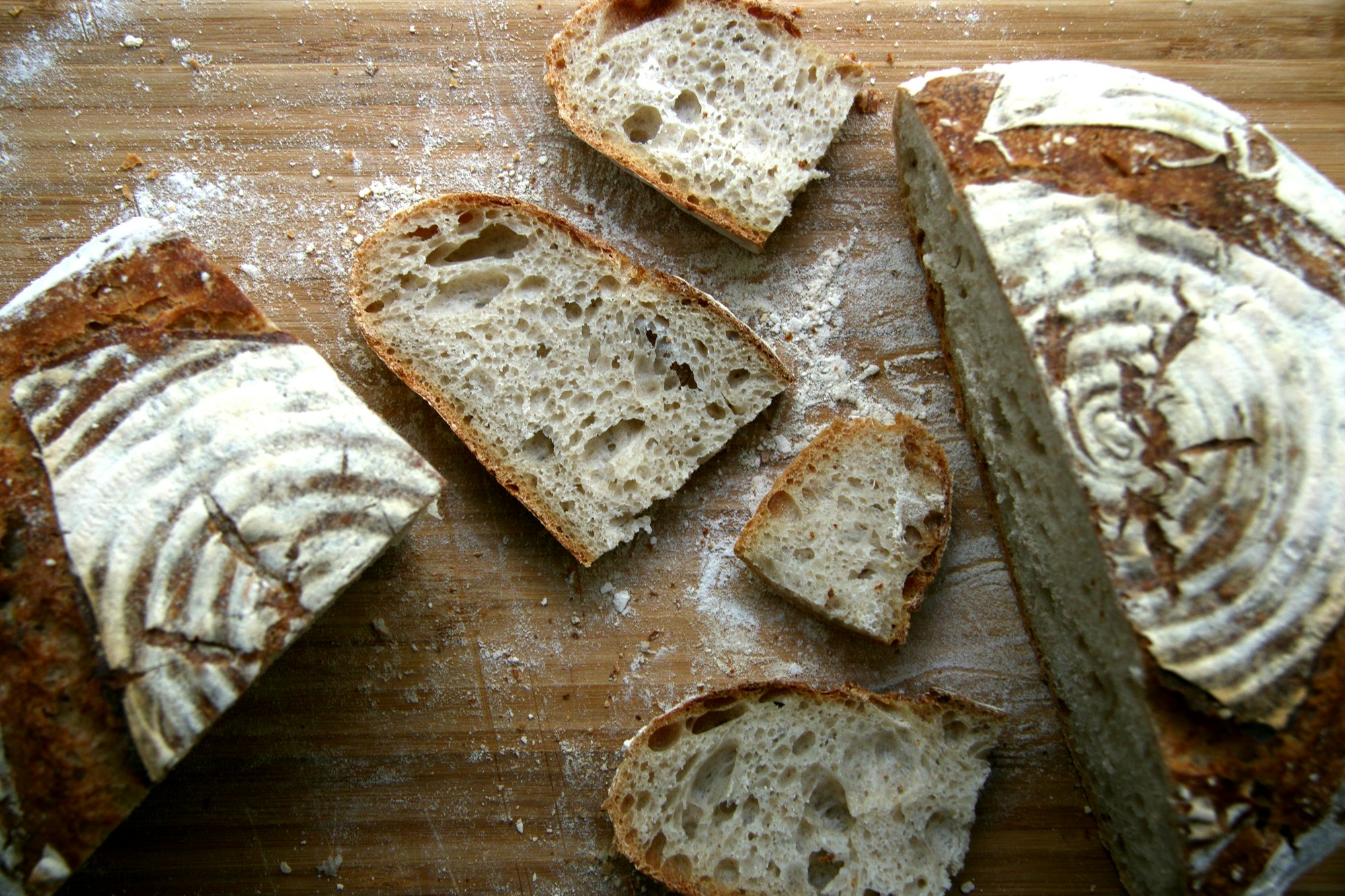
Sourdough bread is made using a “starter” comprised of wild yeast and lactic acid bacteria. During the preparation process, the starter is mixed with dough and begins to ferment the flour. As a result, sourdough bread is “pre-digested”.
In other words, bacteria have munched away at the bread before it is even baked, breaking down the carbohydrates. According to the Monash University health app, spelt sourdough is low-FODMAP, owing to the fermentation process.
Remember, not all sourdough bread will be low FODMAP, with variables such as fermentation time, added ingredients and type of flour influencing the nutritional profile.
Important points to remember
A low-FODMAP diet is NOT a FODMAP-free diet
On the low-FODMAP diet, the goal is to restrict high-FODMAP foods or portions, not to eliminate them entirely.
A strict low-FODMAP diet can disrupt microbiome diversity and lead to fibre deficiency. If you only ate food naturally free of FODMAPS, including meat, eggs, seafood and fats, you would starve your beneficial bacteria.
Portion size is everything
A food that is high in FODMAPS can be low-FODMAP if you eat a small portion size. For example, a whole cup of bulgar wheat pasta is high-FODMAP, whilst a half-cup is low-FODMAP.
Likewise, a whole cup of prebiotic legumes is high FODMAP, whereas half a cup of tinned lentils is considered low-FODMAP. As such, you can still eat prebiotic foods during the diet, albeit fewer of them.
Low-FODMAP is NOT a gluten-free diet
Unless you have coeliac disease, a wheat allergy or non-coeliac sensitivity, there is no reason to restrict gluten. Although a low-FODMAP diet restricts plenty of glutinous grains, this is due to their high fructan content, not gluten components.
Glutinous products with a low fructan content are permitted on the low-FODMAP diet, namely spelt sourdough. Likewise, you can eat smaller portions of high-FODMAP glutinous products, like whole grains.
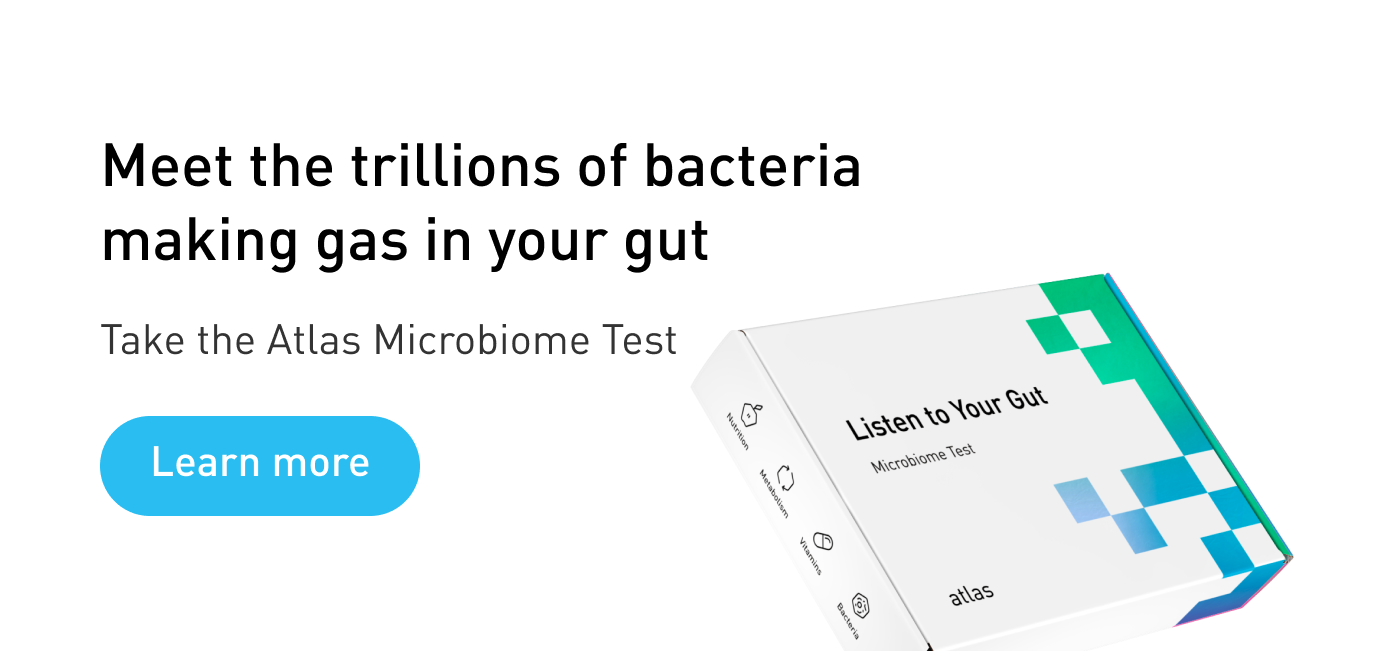
Dietary fibre supplements
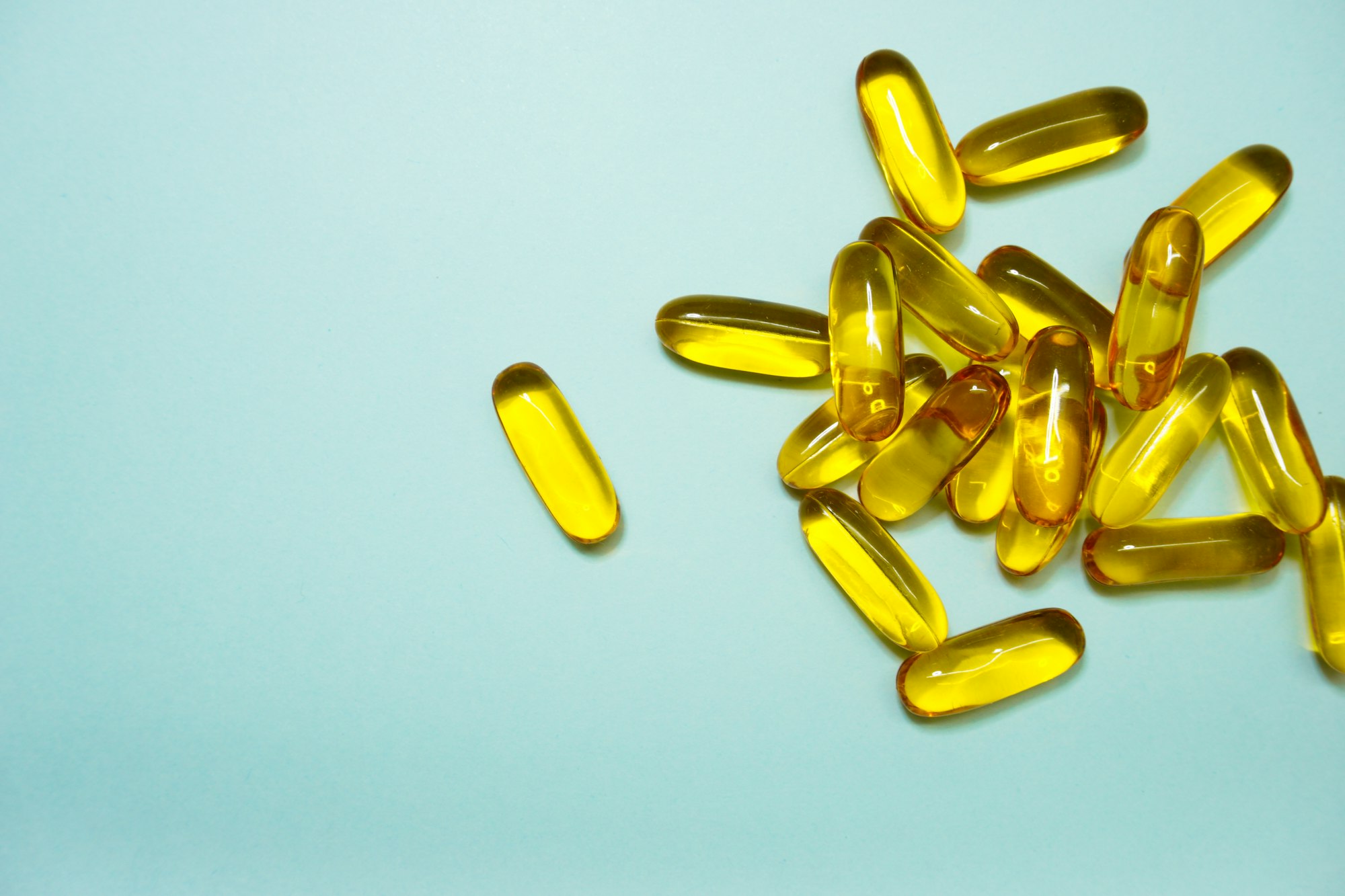
The low-FODMAP diet may reduce your overall fibre intake. This is problematic as fibre plays a key role in feeding the microbiome, regulating bowel movements and normalising blood sugar levels.
Psyllium husk is minimally fermented by the gut microbiome and is less “gas forming” than other types of fibre. As a result, it may be better tolerated by those with IBS.
Also known as ispaghula, psyllium can soften hard stools and potentially improve bloating. Make sure you mix psyllium powder with enough fluids to prevent swelling in the mouth. Otherwise, you risk choking.
According to Monash University, other types of fibre with less “gas forming” properties include linseeds and oats. In light of this, they may be a good choice of a dietary supplement during the restriction phase, provided your doctor/nutritionist recommends them.
Although the research is nascent, there is promising evidence for the use of partially hydrolysed guar gum (PHGG) in treating IBS. What’s more, PHGG appears to be prebiotic, promoting the growth of beneficial bacteria such as lactobacillus.
Lastly, Monash University has recently approved two branded fibre supplements as low FODMAP, namely:
- SunFiberⓇ
- RegularGirlⓇ
Nutritionist top tip: When you start taking a fibre supplement, begin with a smaller dose and gradually increase this over several days to the recommended dose. Moreover, many dietary fibre supplements have strong laxative effects and should not be taken without medical supervision.
Summary
- IBS is a common functional bowel disorder affecting around 1 in 7 individuals
- FODMAPS are a group of short-chain carbohydrates that can exacerbate IBS symptoms
- The low-FODMAP diet is a 3 step plan used to identify and restrict offending FODMAPS in those with IBS. It is NOT a diet for life
- You should only undertake the diet with medical supervision from a qualified nutritionist
- Whilst the diet can significantly improve IBS symptoms, it can lead to a reduced intake of fibre
- During the restriction phase, it is inevitable that your prebiotic intake will be reduced, though you needn't stop eating gut-loving plant fibre entirely
- You should gradually reintroduce high-FODMAP foods after the restriction phase, allowing your gut to acclimatise
- Psyllium supplements and partially hydrolysed guar gum may help you reach your recommended daily fibre intake during a low-FODMAP diet. With that said, consult your GP before using any fibre supplement
☝️DISCLAIMER☝This article is for informational purposes only. It is not intended to constitute or be a substitute for professional medical advice, diagnosis, or treatment.


